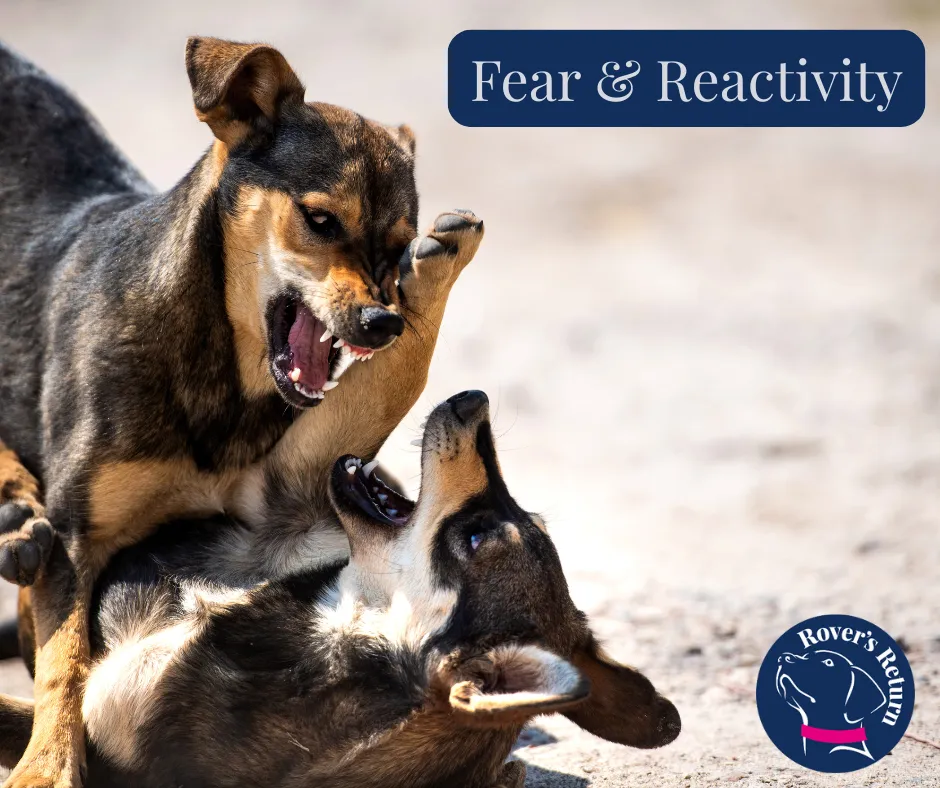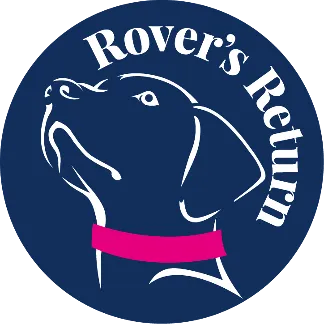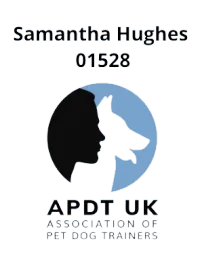Book a FREE 1:1 Assessment Call By Clicking HERE
Specialising In Dog Reactive Behviour
Accredited by APDT, ABTC and UK DOG Behaviour and Training Charter
Qualified and Experienced
Force Free Trainer and Behaviourist
Dog Training Leicestershire Educational Blogs

Lead Reactivity in Dogs: Causes and Training Tips
Lead Reactivity in Dogs: Causes and Training Tips

Taking your dog for a walk should be a peaceful and soothing experience. For most owners,
though, walks can be stressful sometimes.
Is Your Reactive Dog Ruining your life?
Lead reactivity in dogs is the term for the behaviour when your dog acts adversely which can be puling, barking, growling, or lunge at people or animals when on their lead. Understanding why it is happening and how to train your dog positively can restore walking to
a pleasure.
What is A Red Flag Dog's Behaviour?
Lead reactivity is when a dog overreacts to something while on a leash. The trigger can be anything that the dog finds stressful, commonly it can be another dog, person, or a bike passing by. Dogs will sometimes feel trapped on a lead, which makes them more frustrated. This most of the time results in lunging, barking, or snapping.
Lead reactivity is usually due to frustration or excitement and not aggression.
Why Dogs Are Lead Reactive
Some dogs are reactive on lead and not off lead.
Understanding why dogs are leash reactive is the key to correcting the problem. A number of
factors may contribute:
● Frustration due to restraint: Dogs have a natural desire to investigate. When they
get underfoot with the lead, they might react.
● Fear or anxiety: Some dogs become threatened when being restrained and react
defensively.
● Lack of socialization: The dog that is not socialized to other pets or individuals will
find walks threatening.
● Past negative experiences: A dog with a past negative experience walking will
become reactive.
● High energy or excitement: Over aroused dogs will overreact to any stimulus when
leashed.
Knowing the causes of leash reactivity in dogs enables you to use the appropriate training
techniques.
Signs of Lead Reactivity
A dog’s behaviour is formed by what works to keep them safe in the situation. Typical signs of leash reactivity in dogs are:
● Growling or barking at others, including people or dogs
● Forward or sideways lunging
● Stiff posture
● Hard staring
● Trying to bite or snap
Early recognition of these signs enables you to respond before the action worsens.
Positive Reinforcement: The Key to Leash Training

As a force-free trainer, it is also necessary to be all about positive reinforcement.
Punishment also increases the trigger of fear and aggression, resulting in increased leash
reactivity. Rewarding appropriate behaviour, however, builds trust and welcomes relaxed
walking.
Positive reinforcement may involve:
Treats or small snacks to change the feelings of fear toward optimism.
Verbal praise, speaking calmly and softly to your dog.
Petting gently
Create space away from the trigger
Favourite toys
The essence is consistency. Every time the trigger is present, either create space to communicate to your dog that they don’t have to approach the trigger, or if they are calm enough to take food, place high value treats on the ground.
Lead Reactive Dog Training Tips
Here are some real-life leash reactive dog training tips:
1: Begin in a low-distraction setting
Start training in a quiet area with no triggers, the house is a great place to start. There are fewer distractions for your dog to be concerned about.
2: Use high-value rewards
Employ treats or toys that your dog finds enjoyable. This will prompt them to respond favourably.
3: Practice focus exercises
Grow focus away from triggers by teaching the power of disengagement and focusing on you.
4: Establish distance from triggers
If your dog responds to other dogs, add more distance. Gradually reduce it as your dog
relaxes.
5: Keep walks short and positive
Make the walks shorter gradually as your dog learns to remain calm.
6: Consistency is key
Everyone in the family should have the same rules and use the same cues.
To learn more about training, you can visit dogtrainingleicestershire.co.uk for the best
methods in dog leash reactivity training.
Why Professional Guidance Matters for Dog Parents

You are an important part of your lead reactivity resolution as a dog parent. At times,
additional support is needed. This is where professional behaviourists step in to support you with expert knowledge and proven techniques.
As the parents learn from the professionals as well, keep learning to give the best advice. The experts attend vet shows or webinars where they are exposed to studies, case work, and novel methods for issues like lead reactivity of dogs.
For pet parents, this means being able to have confidence that the advice you receive from a
professional is based on the latest evidence. Pet parents and professionals join together to build a team that allows dogs to live more peaceful, happier lives.
Tools That Assist in Training
Although training needs to be force-free, some tools can simplify walking:
● Front-clip harness and double lead: Easier pulling without hurting.
● Treat pouch: Left accessible for instant reinforcement.
Do not use left choke chains or prong collars. They reinforce fear and increase reactivity.
Most lead-reactive dogs are not aggressive. They just require direction and positive reinforcement.
Mistakes to Avoid
● Punishing the dog for barking or lunging
● Forcing the dog to confront triggers too early
● Ignoring body language
● Inconsistent training between family members
Avoiding these mistakes will guarantee that training is always effective and stress-free for
your dog.
Dealing with Dog Behaviour Problems on Walks
Some other dog behaviour problems on walks could be:
● Pulling too strongly
● Jumping up on people
● Chasing things that are moving
Most of these may be addressed using the same positive reinforcement techniques. Training
is shaping calm and focused behaviour, and not the suppression of natural responses.
Step-by-Step Lead Reactivity Training
● Observe and record triggers
Note where and when your dog reacts.
● Train alternative behaviours
Teach your dog to sit, focus, or walk calmly at the sight of a trigger.
● Gradual exposure
Gradually expose your dog to triggers at a safe distance. Reward calm behaviour.
● Increase the challenge carefully
Gradually reduce the distance or add more distractions while maintaining success.
● Celebrate small wins
Every calm walk is a step forward. Positive reinforcement is most effective with patience.
Can Dogs Grow Out of Lead Reactivity?
The answer is yes! But you must remember, lead reactivity training is a journey. Things take time, but consistency and kindness have huge payoffs.
When to Get Professional Assistance
If you are worried about your dog extreme reaction or are being threatened, consultant professional force-free trainer. Don’t use punitive techniques because they don't work and can be damaging.
FAQs
1. What is the cause of lead reactivity in dogs?
Lead reactivity most often stems from frustration, fear, or a lack of socialization, high levels of neurotransmitters and training. Leashed animals cannot run away or towards their triggers like other animals or individuals. This release of reactive behaviours, such as growling, barking, or lunging, makes lead reactivity, a prevalent occurrence, particularly in animals with no exposure to positive experiences with other animals or environments.
2. How do I eliminate lead reactivity?
Training utilizes positive reinforcement techniques. Start rewarding your dog for remaining
relaxed when seeing a trigger. Use high-reward treats and distribute them over time while
moving your dog away from the trigger, as they stay relaxed and calm. Be consistent and
patient.
.
3. Can lead reactivity be completely cured?
With consistent training and reward, most can change significantly. While some dogs will
inevitably respond with increased sensitivity to certain stimuli, they are good at controlling
their response.
5. Do I use a muzzle on a leash-reactive dog?
Muzzles can be used as a safety measure if your dog bites or shows aggression. They are
not, however, a solution for the root of reactivity. A muzzle should be used in combination
with behaviour modification training, not as a one-time fix.
Rovers Return Dog Training offer a strategic behaviour program to change your dog's behaviour and make walks enjoyable. Book a FREE call to discuss the process
Highly Qualified Behaviourist
Accredited by APDT, ABTC and UK DOG Behaviour and Training Charter
Accredited Scentwork Instructor
Force Free Trainer and Behaviour
Force Free Trainer and Behaviour
Accredited Scentwork Instructor
Accredited by APDT, ABTC and UK DOG Behaviour and Training Charter
Highly Qualified Behaviourist
Contact Us
Sam: 07725 802995
You can contact us via Live Chat button at the bottom of the screen or the contact box to the right.
You can also book one of our services online using the View Dates buttons under the service you require.
© 2023 by Rovers Return Dog Trainers Academy - Force Free Dog Training Lutterworth, Broughton Astley, Leicestershire, Hinckley, Nuneaton, Stoney Stanton, South Kilworth, Ullesthorpe
Privacy Policy | Terms and Conditions | Terms and Conditions of Services | Sitemap


Facebook
Instagram
X
LinkedIn
Youtube
TikTok